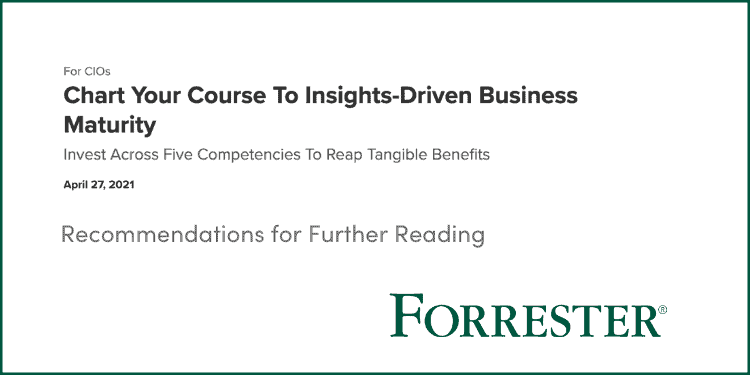As organizations strive to become more data-driven, Forrester recommends five actions to take to move from one stage of insights-driven business maturity to another.
After establishing a solid strategy, the second phase involves planning key processes and practices to support the strategy, including “the emerging and increasingly important DataOps and ModelOps processes and methodologies.”
Forrester recommends:
- Beginners: Ensure that your methodology, governance, and operations processes are agile and adaptive.
- Intermediates: Build on your successes and work to scale your IDB capabilities across the enterprise using agile and adaptive DevOps, DataOps, and ModelOps processes.
- Advanced firms: Experiment, learn, and continuously improve the effectiveness of your IDB applications; leverage the power of machine learning (ML) to automate apps and processes to scale your IDB capabilities even further.
The following resources will help you understand DataOps principles and how to get started:
- Blog: For Data Team Success, What You Do is Less Important Than How You Do It
- Blog: What is DataOps?
- White Paper: DataOps is Not Just DevOps for Data
- White Paper: 6 Steps to an Enterprise DataOps Transformation
- White Paper: Launch Your DataOps Journey with the DataOps Maturity Model
- Blog: 4 Easy Ways to Start DataOps Today
The third phase involves finding the right internal partners and establishing your organizational structure. “Your IDB practices won’t succeed unless your leaders commit to attracting and retaining data and analytics talent, developing data science and other data and analytical skills, establishing centers of excellence (COEs), and improving the overall data literacy of all employees.” We also recommend establishing a DataOps COE or Dojo.
The fourth phase involves ensuring “that your IDB processes and applications are based on a scalable, future-proof, and discoverable data architecture, such as a data fabric,” and data mesh. Your DataOps practice, established in the second phase provides a solid foundation for your successful Data Fabric or Data Mesh.
- Blog: DataOps Enables Your Data Fabric
- Webinar: How DataOps Enables a Data Fabric
- Webinar: Connecting Your Data Mesh with DataOps
Lastly, “deploy data mesh and data fabric technologies.” We suggest using a DataOps Platform as the superstructure for your data program.
- Blog: What a DataOps Platform Can Do For You
- Blog: A Guide to Understanding DataOps Solutions
- White Paper: Should you Build or Buy a DataOps Solutions: The Case for a DataOps Superstructure
You can read the Forrester article in its entirety here.






